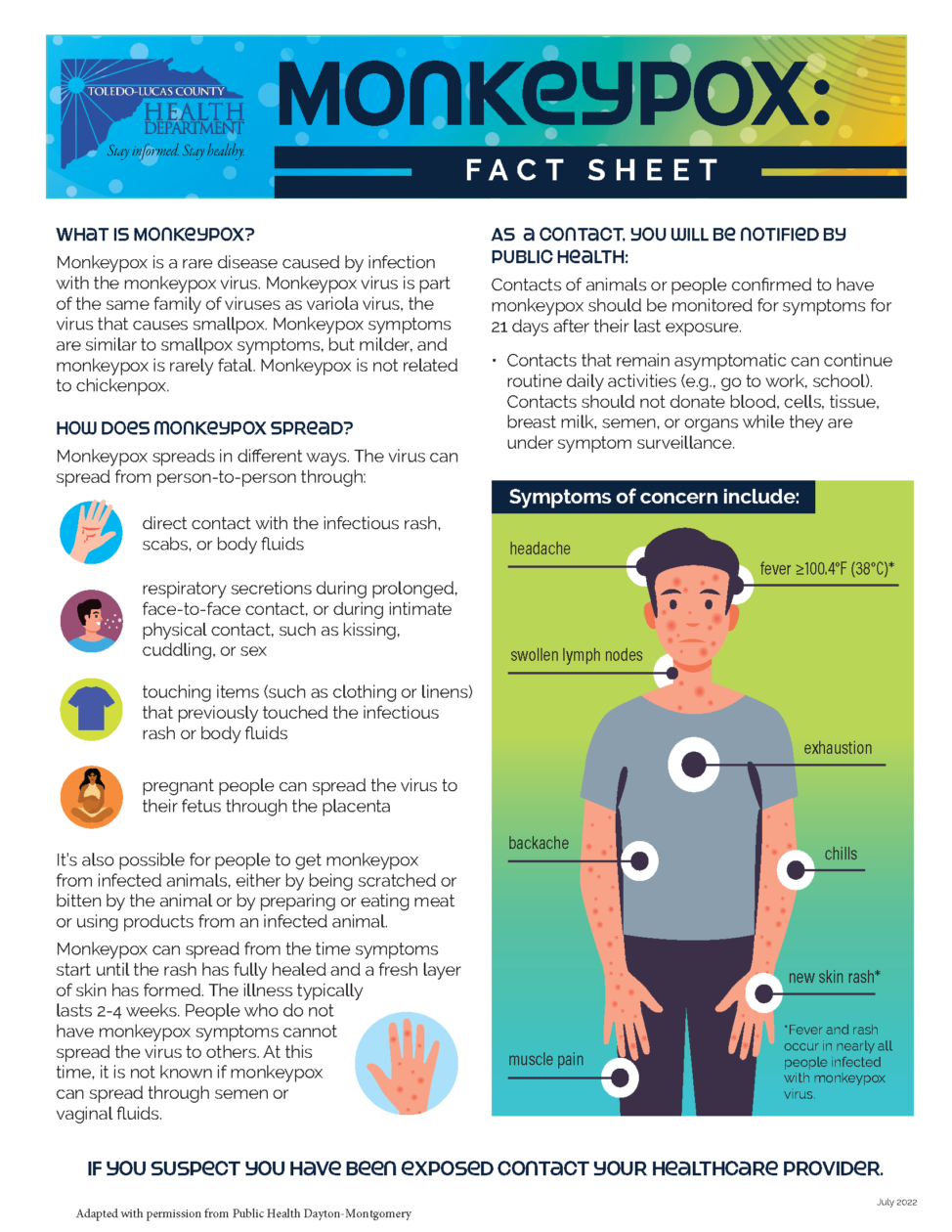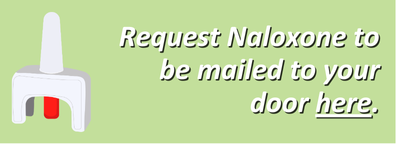Overview:
Monkeypox is typically a rare disease caused by the monkeypox virus.
During 2022, cases of monkeypox have been reported in areas where monkeypox is not usually found. This includes various countries around the world, throughout the U.S., and here in Ohio.
Most people recover from their illness within 2-4 weeks without needing any specific treatment. However, some people with monkeypox infection may be at higher risk for severe illness, including people who have weakened immune systems.
At this time, the risk of monkeypox in the U.S. and Ohio is believed to be low.
Monkeypox does not spread easily between people, but anyone in close contact with a person with monkeypox can get it and should take steps to protect themselves.
What is Monkeypox:
Monkeypox is a rare disease that is caused by infection with monkeypox virus. Monkeypox virus belongs to the Orthopoxvirus genus in the family Poxviridae. The Orthopoxvirus genus also includes variola virus (which causes smallpox), vaccinia virus (used in the smallpox vaccine), and cowpox virus.
Monkeypox is endemic in several central and western African countries e.g. Congo, Nigeria and Ghana.
Signs and Symptoms:
In humans, the symptoms of monkeypox are similar to but milder than the symptoms of smallpox. Monkeypox begins with fever, headache, muscle aches, and exhaustion. The main difference between symptoms of smallpox and monkeypox is that monkeypox causes lymph nodes to swell (lymphadenopathy) while smallpox does not.
-Monkeypox symptoms usually appear one to two weeks after infection, but sometimes this can extend to 3 weeks.
-Monkeypox can cause a rash which may look like pimples or blisters. The rash will go through several stages, including scabs, before healing, and the rash may be located on one or more areas of the body including: the hands, feet, chest, face, genitals, or inside the mouth, vagina, or anus. Some people may also experience flu-like symptoms, which can include fever, headache, muscle aches, sore throat, cough, swollen lymph nodes, chills, or exhaustion. Sometimes, people get a rash first, followed by other symptoms. While others only experience a rash.
-Monkeypox can be spread from the time symptoms start (rash or flu-like symptoms) until the rash has healed, all scabs have fallen off, and a fresh layer of skin has formed. This can take several weeks.
-Most infections last 2-4 weeks and resolve without medication. There are no treatments specifically for monkeypox, but antiviral drugs may be recommended for some people.
Transmission:
Transmission of monkeypox virus occurs when a person comes into contact with the virus from an animal, human, or materials contaminated with the virus. The virus enters the body through broken skin (even if not visible), respiratory tract, or the mucous membranes (eyes, nose, or mouth). Animal-to-human transmission may occur by bite or scratch, bush meat preparation, direct contact with body fluids or lesion material, or indirect contact with lesion material, such as through contaminated bedding. Human-to-human transmission is thought to occur primarily through large respiratory droplets. Respiratory droplets generally cannot travel more than a few feet, so prolonged face-to-face contact is required. Other human-to-human methods of transmission include direct contact with body fluids or lesion material, and indirect contact with lesion material, such as through contaminated clothing or linens. People who do not have monkeypox symptoms cannot spread the virus to others.
Prevention:
There are number of measures that can be taken to prevent infection with monkeypox virus:
-Avoid contact with animals that could harbor the virus (including animals that are sick or that have been found dead in areas where monkeypox occurs).
-Avoid contact with any materials, such as bedding, that has been in contact with a sick animal.
-Practice good hand hygiene after contact with infected animals or humans. For example, washing your hands with soap and water or using an alcohol-based hand sanitizer.
-Use personal protective equipment (PPE) when caring for patients. (Gloves, Mask, Gown, Goggles)
For people who are sick with monkeypox:
Isolate at home except to receive medical care. If you have an active rash or other symptoms, stay in a separate room or area away from people or pets you live with, when possible.
Treatment:
For purposes of controlling a monkeypox outbreak in the United States, smallpox vaccine, antivirals, and vaccinia immune globulin (VIG) can be used.
JYNNEOS At this time, Ohio has a limited supply of the Jynneos vaccine for monkeypox, and the vaccine is primarily available for persons with exposure to someone with known or suspected monkeypox infection, or exposure at events linked to monkeypox transmission. This vaccine is administered as a live virus that is non-replicating. It is administered as two subcutaneous injections four weeks apart. There is no risk for spread to other parts of the body or other people. People who receive JYNNEOS TM are not considered vaccinated until 2 weeks after they receive the second dose of the vaccine.
-Antivirals, such as tecovirimat (TPOXX), may be recommended for people who are more likely to get severely ill, like patients with weakened immune systems.
Resources:
MonkeyPox General Information
https://www.cdc.gov/poxvirus/monkeypox/index.html
Vaccination Information
https://www.cdc.gov/vaccines/hcp/vis/vis-statements/smallpox-monkeypox.html
U.S. Map and Case Count
https://www.cdc.gov/poxvirus/monkeypox/response/2022/us-map.html
Infection Prevention and Control of Monkeypox in Healthcare Settings
https://www.cdc.gov/poxvirus/monkeypox/clinicians/infection-control-healthcare.html/





